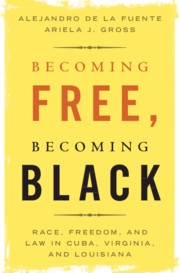What are we comparing when we compare law and race across cultures? This was once an easier question to answer. If we take “races” to be real categories existing in the world, then we can compare “race relations” and “racial classifications” in different legal systems, and measure the impact of different legal systems on the salience of racial distinction and the level of racial hierarchy in a given society. That was the approach of the leading comparativist scholars at mid-century. Frank Tannenbaum and Carl Degler compared race relations in the United States and Latin America, drawing heavily on legal sources regarding racial definition, manumission of slaves, and marriage. They were studying relations between “white people” and “Negroes,” as well as the possibility of an intermediate class of “mulattoes.” But once we understand race itself to be produced by relations of domination, through several powerful discourses of which law is one, we are up against a more formidable challenge. We must compare the interaction of two things—legal processes and ideologies of race—in systems in which neither is likely to have a stable or equivalent meaning. Because “law” is likewise no longer as clear-cut a category as it once was; in addition to the formal law of statute books and common law appellate opinions, we now understand “law” to encompass a broad set of institutions, discourses, and processes produced by a larger cast of characters than solely jurists, legislators, and appellate judges.
